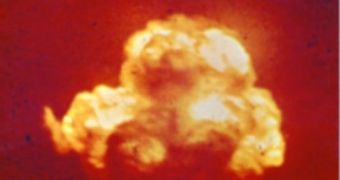The first explosion of a man-made nuclear weapon took place on July 16, 1945 in the desolate White Sands deserts of New Mexico. The world would soon realize the devastating effects of this type of weapon and would live with fear of global annihilation for half a century.
What the world didn't know is that the US exposed innocent civilians to the potentially lethal effects of radiation produced by the explosion. On the 62nd anniversary of the world's first atomic explosion, a new research led by the Centers for Disease Control and Prevention (CDC) found some troubling results.
Many civilians living in areas adjacent to the explosion were exposed to direct, but mostly consequent effects of the blast and had ingested radioactive materials that were deposited in rainwater and goat's milk, thus suffering from irradiation never previously accounted for.
Though it is somewhat unlikely that US authorities deliberately failed to evacuate a larger area around the bomb site for a longer period of time after the nuclear test, this sort of negligence is still inexcusable. Most probably, scientists and military personnel didn't know exactly the future effects of a nuclear blast, since it was the first in human history, so the countermeasures were not as effective as it was thought.
Indeed, scientists were trying to minimize radiation effects on soil and water by exploding the bomb at an elevated height, so it was detonated atop a 100-foot steel tower erected at Trinity specifically for the test. However, the explosion created a crater more than 1,000 feet (330 m) wide and 10 feet (3 m) deep and expelled radioactive fallout high into the atmosphere, which was later recorded as far away as Indiana.
Due to the classified nature of the experiment, little was known on the effects of nuclear applications on the soil, water and general population and the secret was not out for another six decades. Unfortunately, this also meant that local residents were not warned or evacuated in advance of-or even following-the test.
A clear example is the fact that three hours after the blast, exposure rates were measured at around 15 Roentgen in ranches around the test site, while the maximum legal limit, beyond which the exposure is considered hazardous to the health, is of only 0.002 Roentgen.

 14 DAY TRIAL //
14 DAY TRIAL //